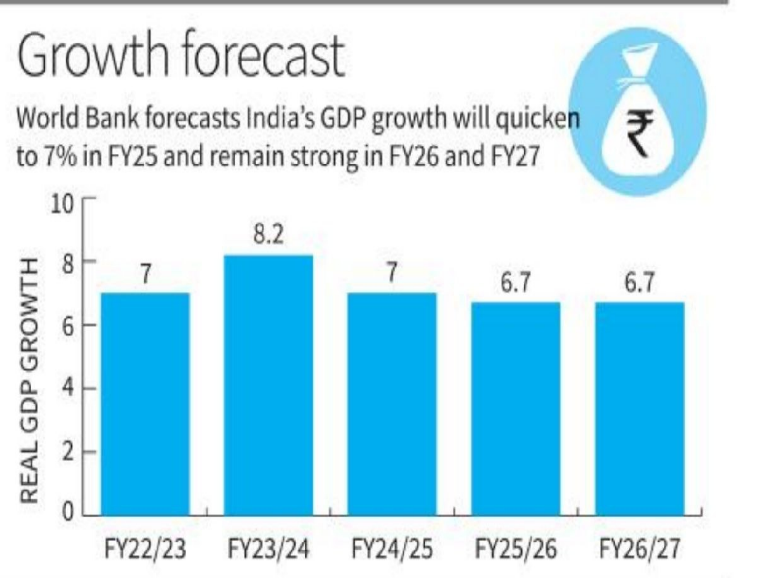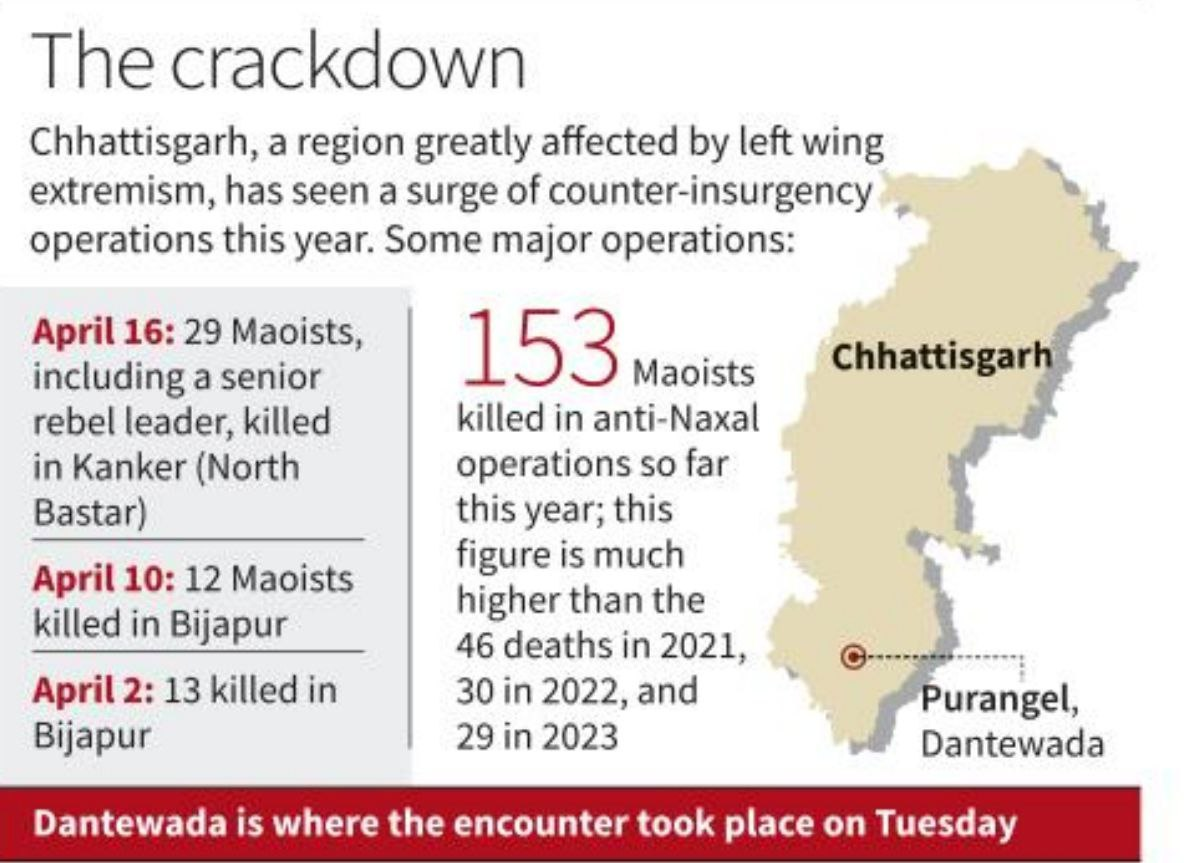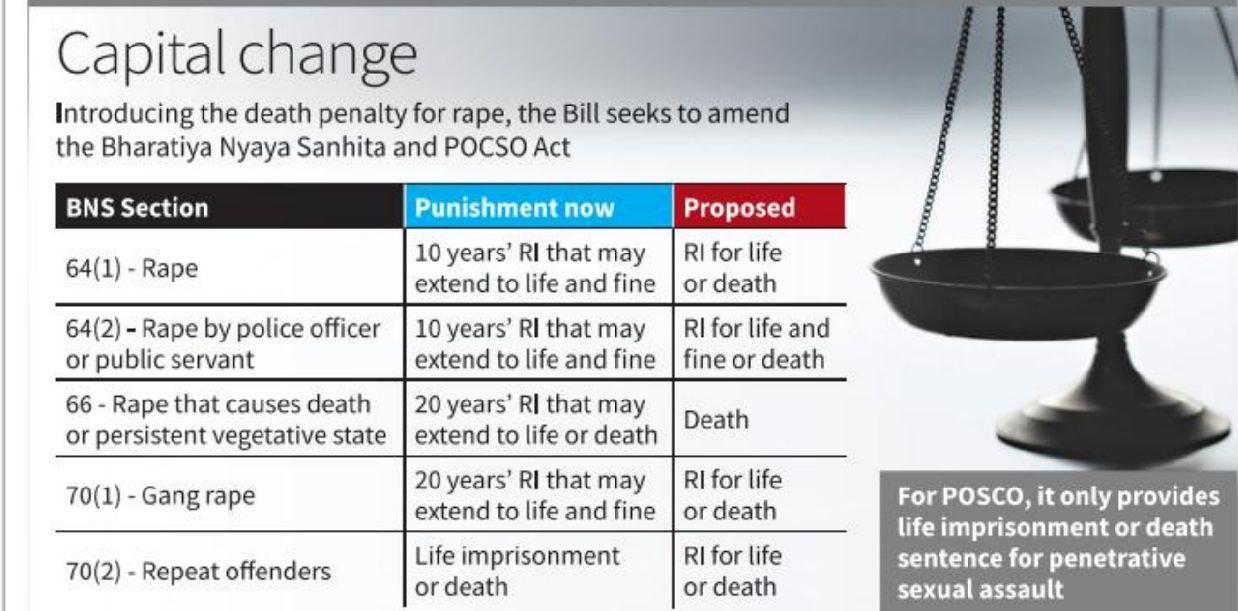Index:
- Export-linked Jobs Decline in India: Missed Post-China Opportunity
- World Bank Revises India’s GDP Growth Estimate for FY25 to 7%
- Harnessing Biotechnology for Economic Development
- The Harm Principle: John Stuart Mill’s Theory on Liberty
- Operation against Naxalism
- Change in punishment for Rape
- Upcoming Jammu and Kashmir Election – Voters Scenario
1. Export-linked Jobs Decline in India: Missed Post-China Opportunity
- Key Issue: World Bank report highlights the decline in export-linked jobs in India over the last decade. India missed an opportunity due to China’s exit from labor-intensive manufacturing sectors.
- Decline in India’s Export Share: India’s share in global exports of labor-intensive sectors (apparel, leather, textiles, footwear) has decreased.
- Countries like Bangladesh, Vietnam, Poland, Germany, and France have increased their global share in such sectors.
- Between 2015-2022, India’s major job-creating sectors saw export share drop by 2%.
- Sectoral Impact: Key job-generating sectors (textiles, leather, gems & jewellery, marine products) experienced a sharp decline.
- Shipments from these sectors dropped by 12% from FY18 levels.
- Youth Unemployment & Growth: India’s rapid growth (8.2% in the last fiscal year) contrasts with high urban youth unemployment (17%).
- The World Bank suggests creating more trade-related jobs and deeper integration into global value chains (GVCs).
- Global Trade Landscape: The global trade scenario is undergoing significant shifts, with India missing the opportunity to leverage international trade to boost services exports.
- Strategic Recommendations:
- India should focus on diversifying exports and leveraging GVCs.
- Address barriers such as policy hurdles that have hindered GVC integration.
- Free Trade Agreements (FTAs) are underutilized, despite their potential benefits for labor-intensive sectors.
- Policy Implications: India’s progress in engaging global markets faces challenges from new barriers affecting goods, services, and investments.
2. World Bank Revises India’s GDP Growth Estimate for FY25 to 7%
CONTEXT: GDP Growth Revision: The World Bank revised India’s GDP growth estimate for FY25 to 7%, up from the earlier 6.6%. This is driven by infrastructure investments and a rise in real estate demand. FY26 growth is projected at 6.7%.
Key Concerns:
- Urban Youth Unemployment: Remains high at 17%, reflecting challenges in job creation, particularly in labor-intensive sectors (apparel, leather, footwear).
- Declining Share in Exports: India has seen a decline in global market share for labor-intensive exports such as textiles and footwear.
- Global Competitiveness:
- India’s competitiveness has improved due to the National Logistics Policy (NLP) and digital initiatives aimed at reducing trade costs.
- However, tariff and non-tariff barriers hinder India’s trade growth potential, especially in exports.
- Industrial Growth:
- Industrial growth is expected to slow to 7.3% in FY25 from 7.6% in FY24, impacted by post-pandemic disruptions.
- Growth in industrial sectors is expected to pick up to 9.5% in FY26.
- Investment Drivers:
- Growth in Gross Fixed Capital Formation (GFCF) is expected to rise to 7.8%-9% in FY25-FY26, from 6.6% in FY23.
- Sector-Specific Insights:
- Services sector growth is expected to remain robust at 9% in FY25 and beyond, contributing significantly to overall GDP.
- Trade-related job creation is critical, and India needs deeper integration into global value chains for sustained productivity growth.
Other Projections: Export of goods and services is expected to grow by 7.2% in FY25 and slightly lower at 6.7% in FY26..The report also projects a steady growth in areas like electronics, green technology, pharmaceuticals, and other business services.
3. Harnessing Biotechnology for Economic Development
- BioE3 Policy Overview:
- The Indian government unveiled the BioE3 (Biotechnology for Economy, Environment, and Employment) It aims to incentivize growth in the biotech sector by leveraging biotechnology to modernize manufacturing and industrial processes.
- The policy focuses on making these processes sustainable, environment-friendly, and more efficient by introducing biotechnology in various sectors.
· What is Biotechnologyand its Potential Application: |
o Biotechnology involves manipulating biological organisms and processes to create new or improved products and services across sectors like genomics, synthetic biology, bioinformatics, etc. o Applications in fields such as medicine, agriculture, and industry include gene editing, synthetic enzyme production, and protein synthesis, promising breakthroughs in healthcare, food production, and environmental sustainability. |
· Examples of Biotechnology Applications: |
o Animal-free milk production using precision fermentation, offering nutritional and environmental benefits. o Bio-plastics from organic, renewable, and biodegradable materials, reducing reliance on traditional plastics and lowering environmental impact. o Use of micro-organisms in breaking down CO2, offering solutions to climate change challenges by reducing the carbon footprint. |
- How the Policy Affects India:
- The BioE3 policy is expected to have an economic impact of over $2-4 trillion in the next decade, largely through biomanufacturing.
- Establishing biotech hubs across India will foster collaboration between academia, industry, and start-ups for the development of biotech products and services.
- New biotechnology developments will assist sectors like agriculture, marine ecosystems, and healthcare by improving productivity, sustainability, and reducing environmental impacts.
- India’s Strategic Positioning:
- Biotechnology will play a key role in the Green Hydrogen Mission and National Quantum Mission.
- The policy will encourage tech adoption in areas such as food security, green energy, synthetic biology, and medical advancements.
BioE3 aims to train and promote skilled talent in biotech, preparing India to become a global leader in this field.
4. The Harm Principle: John Stuart Mill’s Theory on Liberty
- Core Idea of the Harm Principle:
John Stuart Mill’s seminal work On Liberty establishes the idea that individual freedoms can only be restricted when one’s actions cause harm to others.
- The principle states, “the only power that can be rightfully exercised over any member of a civilized community, against his will, is to prevent harm to others.”
· Types of Actions: Mill differentiates actions into two categories: § Self-regarding actions: These only affect the individual performing the action and should not be restricted by society or the state. § Other-regarding actions: These impact others and can warrant intervention if they cause harm.
|
· Contemporary Example: o Recent incident in Assam where the state’s Chief Minister, Himanta Biswa Sarma, made statements regarding the “Miya Muslim” community, which sparked controversy. o Mill’s harm principle is used to evaluate whether such statements, despite being inflammatory, can be restricted under the pretext of causing harm to a community.
|
- Debating Harm:
- The central question revolves around what constitutes harm. It is clear when physical injury occurs, but psychological or emotional harm can be trickier to define.
- For instance, excessive drinking may not harm others directly but can emotionally or physically affect one’s family.
- Freedom of Speech:
- Mill argues that freedom of speech should not be curtailed unless it results in direct harm. He emphasizes that even controversial opinions should be expressed, as silencing them deprives society of the opportunity to seek truth or refine its understanding.
- He notes, however, that speech which directly incites violence or spreads harmful misinformation can be justifiably restricted.
- Relevance to Modern Society:
- The article also reflects on how state actions, such as censoring opinions or silencing groups, must be scrutinized through the lens of Mill’s harm principle.
Mill’s theory continues to influence debates on balancing individual liberty with societal safety, particularly in cases involving free speech, hate speech, and government intervention.
5. Operation against Naxalism
The operation, involving the District Reserve Guards, Bastar Fighters, and Central Reserve Police Force, was based on intelligence about Maoist activity.
Arms and ammunition were recovered, and the deceased were identified as members of the West Bastar and Darbha Division Committee.
This brings the total number of Maoists killed in 2023 to 153, a significant increase from previous years. The search operation is ongoing, with possible additional Maoist casualties.





